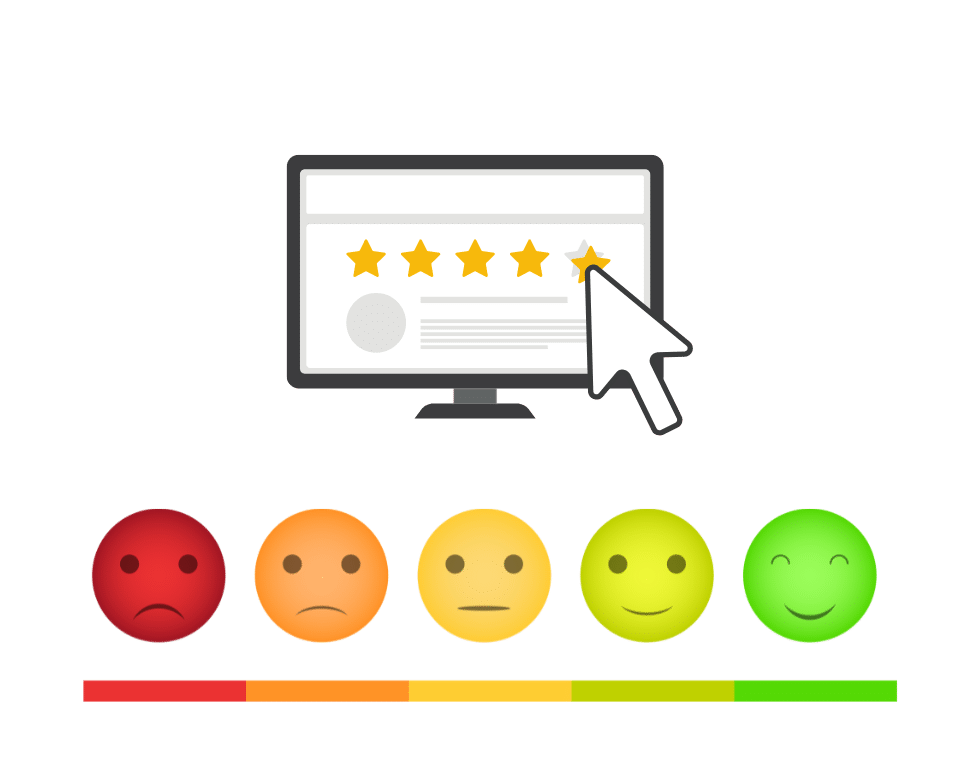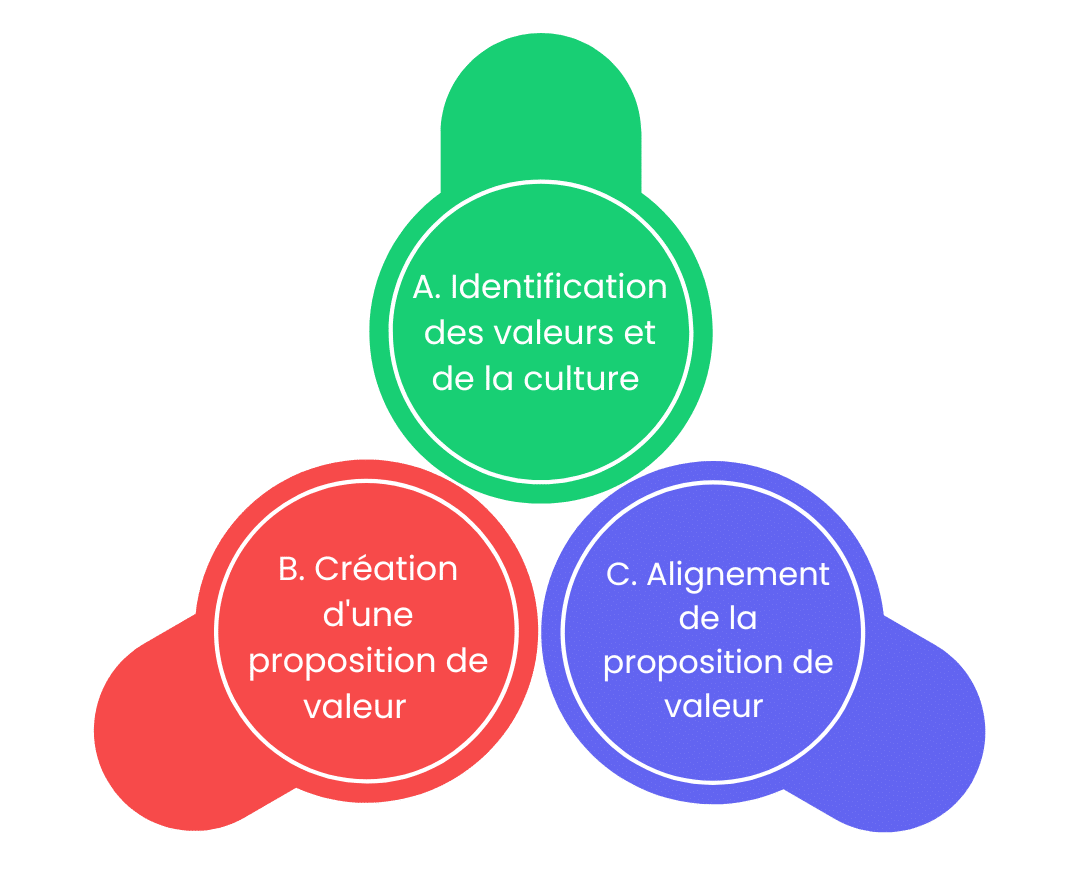How to build and improve your employer brand in the digital services sector?

Editor's note: In the term digital services, we include IT Services and digital transformation consulting activities.
Digital Service Companies (IT Services) are increasingly facing a talent shortage. According to a study by the Institut Montaigne, 10% of job vacancies in the digital sector remain unfilled. So, not only are IT Services suffering from a lack of talent on the job market, but recruitment at IT Services is penalized by a declining attractiveness according to the opinion of young profiles, due to a not always flattering reputation of life at IT Services. Added to this is a high turnover within the industry, in excess of 20%, which only accentuates these difficulties.
The IT Services must therefore work on improving their employer brand. They must put this at the top of their priorities, otherwise they could risk slowing down their growth.
Employer branding encompasses a company's brand image on human resources management and recruitment topics. This is the image perceived by both candidates, who are on the job market and could apply, but it is also the image that the company's employees have on these different subjects.

Working to improve your employer brand involves working on employee engagement and satisfaction. The higher the employee satisfaction, the more the employer brand progresses. Because employees are the spokespersons for this employer brand with candidates.
This article provides digital companies with a guide to developing and improving their employer brand.
Assess your current employer brand
Understand the current perception of your employer brand
Before any improvement project, it is necessary to know the current perception of your employer brand IT Services. You need to know how the name of your IT Services is perceived on the topics of human resources management, well-being at work and employee satisfaction.
This observation makes it possible to prioritise actions. Changing a company's brand image is indeed a long-term project, and it is important to set priorities where the results will produce the maximum impact.
Analyze the strengths and weaknesses of your employer brand
To analyze the perception of your it consulting employer brand, you can adopt for a combination of approaches.
It is first necessary to establish the specific topics on which you want to understand people's perception of them. The subjects chosen must therefore be those on which you will have the means to act. You can create a list of points to review around the themes of well-being at work, flexibility in work, the interest of assignments, learning and training, career development, and finally, the financial aspects of packages.
To define the impact of each of these topics and go further in prioritization, you can internally determine an impact score based on your knowledge of the topic. You can also rely on a survey carried out among your target to obtain an even more reliable result.

You then need to define the sources that will allow you to learn about the perception of your employer brand. You can search for information through multiple sources:
- reviews from employees or former employees on dedicated sites such as Glassdoor;
- comments on the internet;
- a questionnaire launched among candidates corresponding to your target;
- an internal employee satisfaction survey;
- A survey sent to freelancers – if you work with them regularly.
You can then combine all these sources to obtain more data and a more reliable statistical approach. When you choose to send out questionnaires, remember to provide for the anonymization of responses. Anonymous feedback is systematically less biased than when you have to reveal your identity.
Questionnaires must be well constructed to allow for clear scores. The questions must be mostly closed to leave as little room as possible for interpretation. On the other hand, it is also an opportunity to ask more open-ended questions to get suggestions on the most important actions to take.
Once you have received feedback, you have the means to clearly identify the strengths and weaknesses of your employer brand. You can put a perception notation in front of each of the topics you study.
With the help of this scorecard, you now have concrete visibility of the perception of your employer brand on each of the subjects studied, but also of their impact on your image. You therefore have all the turnkey elements in hand to build an effective action plan to improve your employer brand.
Develop an attractive employer value proposition
The war for talent in the consulting and digital sector requires you to create a particularly attractive employer brand, but also differentiating. Without differentiation work on this aspect, your employer brand will be drowned in the common image and you will not be able to reap all the benefits.

Identification of corporate values and culture
The main pillar of employer branding comes from corporate values and culture. While it is possible to emphasize and better communicate around these subjects, it is not possible to invent these elements or other actions. The values of a company are indeed very strongly linked to the approach and values of the management, and in particular, of the founders of a company.
We must therefore not fall into the trap of wanting to invent from scratch a culture and values that would not be aligned with the vision of the management, otherwise all the communication will be in vain, and the initial effect will quickly fall away. On the contrary, management must conduct a deep reflection to establish current and future values that will be aligned with the company's long-term strategy and the convictions of its leaders.
The number of values retained and put forward must be restricted so that the communication around them remains convincing. It is not enough to communicate about your values, they must be truly lived within the company to remain coherent. Finally, they must also be simple so that everyone can understand them internally, as well as externally.
Creating a differentiating employer value proposition
In a competitive sector such as digital where the war for talent is raging, it is imperative that you have a strong employer value proposition that is different from your competitors. It must not leave the candidates indifferent! You need to emphasize the specific aspects that your company brings.
- On corporate culture
Explain how you maintain a collaborative and dynamic spirit. Insist on your values and have your employees testify on these subjects. Your employees are young: show them how you organize moments of conviviality conducive to meetings and informal exchanges between colleagues.
- On stimulating projects
Working in project mode and the ability to work on different topics is an element that should be used as an opportunity for your value proposition. However, you must be able to offer this diversity of assignments to your employees. If so, you can describe how your company can enable them to work on challenging, high-impact projects.
Highlight your company's successes with well-known brands to demonstrate your expertise.
- On training and development
Set up training and professional development projects to help your employees advance in their careers and learn new skills.
- On flexibility and work-life balance
Authorize teleworking by setting clear rules that allow for greater flexibility. Focus on employee well-being.
- On recognition and rewards
Implement recognition programs to ensure that employee successes are consistently recognized and shared. They need to feel that good work is recognized and appreciated.
There are many other aspects on which you can make your employer brand a differentiator that allows you to facilitate your recruitment and keep your employees longer.
Alignment of the value proposition with the expectations of potential employees
The choice of values and actions in favor of employees must be fully aligned with the expectations of potential employees.
The expectations of potential future employees vary greatly depending on the branch of business, the level of education, the possible professional development offered by the sector, and many other criteria.
As in marketing, it is necessary to know the profile of potential employees and their expectations to make the right choices in terms of employer branding in order to satisfy your employees, current and future.
For consulting activities and IT Services, it is also necessary to take into account the way in which values are perceived in the agenda of candidates and employees. With a workforce that is often younger on average than in most other sectors, it is necessary to promote values that resonate with candidates who have just finished their studies and often display a strong ambition for personal growth, but also an assumed desire for well-being.
Your internal communication and commitments
Prioritize transparent, open communication
Your employer brand has the ability to increase the number of applications by more than 50%, according to a study published by the media Welcome To The Jungle. But to obtain these results, you have to know how to communicate about this employer brand so that it grows and is known to candidates. It must also be constantly realigned and adjusted to be as consistent as possible with the reality of life in the company for employees, and thus accommodate current issues. This is why management must take measures to strengthen communication around the employer brand, and open channels for employees to report the discrepancies between what is communicated and the reality of the facts.
Ensure that your company communicates transparently about its vision, goals, successes, and challenges. Show that you encourage open exchange and value each other's ideas and contributions.
Employees need to be empowered to speak up fearlessly and frequently on these topics. Either through employee surveys, or by organizing dedicated feedback in which employees give feedback specifically on the topics of life at work and their well-being in the company in general.
Of course, managers must be empowered and trained in the approach. This will allow them to be completely open to employee feedback, and prevent negative feedback from having a consequence for the employee, otherwise feedback will quickly become biased or even useless.
Use effective internal communication channels
In a digital services company, it is more difficult to meet regularly in the office, because teams are often dispersed in branches, at customers' sites, and opportunities to exchange ideas are rarer. This lack must therefore be compensated for by creating effective internal communication channels.
Teams should be brought together as often as possible at team building events. It is necessary to offer internal communication tools that facilitate internal exchanges, even when employees work for several months at a client.
You should also choose tools that make it easy to collaborate : allowing employees to position themselves on future customer needs, to indicate the skills they want to improve, or to allow managers to send proposals for participation in projects to their teams.
Employees need to feel part of the company, so it's imperative to keep them informed of company news through regular e-mails, newsletters or an intranet.
You can also give them the means to see what projects other employees are staffed on and when they will be in the office.
Staff your teams more efficiently
Develop a recruitment and promotion strategy

Use of recruitment channels relevant to the digital sector
Finally, the last pillar of the employer brand is the recruitment channel and the promotion of your brand on the chosen channels.
To recruit in the digital sector, it is important to focus your efforts on the channels most used by candidates. It is therefore necessary to study and list the sites specializing in digital offers.
There are many platforms that list job boards according to their expertise. A search on a search engine allows you to identify the best of them according to the needs. Ideally, you use tools that allow you to send on multiple recruitment platforms at once.
Finally, school forums remain a privileged place to not only recruit, but to promote your employer brand. Direct exchanges allow you to better highlight the specificities of your company and how it stands out from other companies in the sector.
Promotion of the employer brand on social networks and professional platforms
In the age of social networks, the importance of social media platforms for promoting your brand should not be underestimated . Here again, it is important to make a choice adapted to your structure. Some social networks and professional platforms are saturated, and promoting your employer brand can be very expensive. On LinkedIn, for example, it is increasingly difficult to promote your employer proposal because of the number of companies present that promote them.
We must succeed in identifying the more recent or possibly less saturated networks on these subjects. Tik-Tok seems at first glance very far from the subject, and yet some companies present before the kinds have increased the strength of their employer brand tenfold by exploiting the novelty of this network and the void left by the rest of the market.
In summary, digital companies must assess their employer brand, develop a differentiating value proposition aligned with the expectations of potential employees, and strengthen their internal communication to improve their employer brand in their industry.
This is a major exercise that must be carried out at the highest level of the company so that the employer brand is disseminated to all teams.


